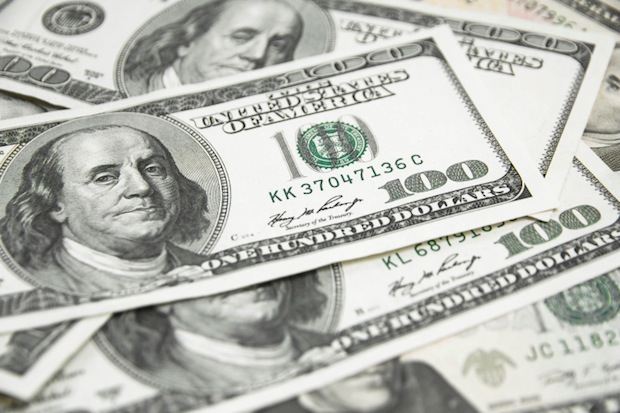The American economy always feels better when the Super Bowl is on. Ads for trucks and beer fill the airwaves. It’s steak and cigar season for the corporate bigwigs, not a time for the calorie conscious. For a few days, they can forget about foreign labour and cratering emerging markets and wallow in the fantasy that America is still about men in faded jeans and worn baseball caps, doing practical things with their hands. Now the pigskin has been locked away until autumn, however, one can take a colder look at the behemoth.
No doubt, it has been a fine few years to be rich in America. The crash of 2008 turned out to be an epic buying opportunity, and you didn’t even have to use your own money. The Federal Reserve was offering its own, via a $800 billion quantitative easing programme, in the name of stimulus. The only terms of access to this geyser of free cash were to be rich and credit-worthy already, or to be a failed bank with friends in government eager to help you jump the line.
For this happy 1 per cent, the stimulus has had the desired effect of wide grins and flushed cheeks. The remaining 99 per cent of Americans, though, are feeling rubbed in a less positive way. Recovery has been halting and unevenly distributed. Investment in venture capital has surged, a great indicator of the availability of speculative capital within the top economic class. But house prices on a national level, a more reliable indicator of general economic health, have bumped along.
Equities have had a tremendous 18 months, soaring more than 30 per cent and replenishing retirement accounts. But the Fed’s money has made it hard for investors to discern real rather than speculative value in stocks. The return on a risk-free investment, the classic starting point for valuing an asset, is now hopelessly distorted. With every company on the boardwalk now strutting around with the spray tan and ‘roided pecs’ of easy money, it’s hard to know exactly how strong anyone really is.
A bubble in technology stocks has also been distracting. Fortunes have been made in Facebook and Twitter long before the business models of either have been proved. Perhaps one day both will deliver the highly targeted advertising in the volumes they promise. But if you would rather buy value than speculation, you will sleep better buying a proven natural monopoly like Google.
Despite all this murk, a consensus has emerged that the thing to do this year is buy in America and sell in emerging markets. The idea is that the QE money that flowed into emerging markets in search of higher returns than were available at home has now been rapidly withdrawn again, as the Fed winds down its bond buyback programme. The volatility will be felt most on the edges of the global economy. The riskiest assets will suffer soon and hard, and then money will gravitate to the safest investments.
In this scenario, US manufacturing is lean, well-capitalised and restructured after the financial crisis, and about to go on a tear. The boom in natural gas will force down domestic energy prices, making American companies even more competitive globally (see Matthew Lynn on page 38). Also, the post-crisis years have forced American consumers to rebalance their accounts and become more credit-worthy. This will lead to more financial activity and greater profits for US banks.
If you take this view, it is still a fine time to buy big US industrial stocks, the big beasts of the index such as General Electric and Boeing, despite their recent run-ups. Anything consumer- and credit-driven such as cars and housing also makes sense. The US car industry shed many of its liabilities during bankruptcy and is making better, more competitive vehicles. By continuously replacing jobs with technology, it will be less constrained by pension obligations in the future.
Apple seems to be taking a breather after years of astonishing product innovation and revenue growth. But with $160 billion cash on hand, 10 per cent of all the corporate cash in America, it has investors piling in, nagging for buybacks and dividends.
Housing-linked investments, whether building firms or mortgage-backed securities, have also proved popular and should continue to be. Blackstone, the private equity giant, assembled a colossal portfolio of homes after the sub-prime collapse, which it is now starting to unload. Healthcare has been another growth sector. Now that Obamacare is passed and in effect, companies can invest knowing the new state of play.
But there are a couple of alternative scenarios worth considering. The first is that there is little immediate upside left in America, that it is fully priced. The price to earnings ratio of the S&P 500 is currently about 20 per cent above its historical average, suggesting a market bubble. You would be better off snapping up the now heavily discounted opportunities in the most promising of the emerging markets such as Mexico, or the recovering markets on the edges of the European Union such as Greece and Spain.
The second is that the volatility we’re now seeing in places like Turkey is the result of easy credit drying up, and that the same effect could yet cause another US meltdown. Either way, you would be better off keeping your money out of America.
Another bearish strategy would be to short US Treasuries. Their two biggest buyers, the Chinese government and the Federal Reserve, are now scaling back their purchases. The Chinese because their current account surplus is shrinking and they have less free cash to invest. The US because, well, it had to end some time. As demand shrinks and supply remains constant, since the US government continues to borrow to pay its bills, prices should fall. What seems to be sustaining US Treasury prices for the moment is the global appetite for safe-haven assets. But it’s easy to imagine a moment when that changes, and more basic economic laws start to apply.
But if all you did over the past few years was wait for investment logic to rear its head, you would have missed out on an extraordinary hot streak. You would have said easy money would cause runaway inflation and corrosive economic instability.
Instead, we have seen the stock markets double and Mark Zuckerberg pile up his billions. The mega-rich are now giga-rich and well on their way to tera-rich. Manhattan and Silicon Valley property has barely stopped surging and technology valuations have surged far beyond sanity. Those sectors back-stopped by the US government, notably finance and manufacturing, have thrived.
These have been dark days for truth-seeking value investors, or lovers of free markets. But as the Federal Reserve closes its spigot, perhaps their time is just around the corner.
Got something to add? Join the discussion and comment below.
Get 10 issues for just $10
Subscribe to The Spectator Australia today for the next 10 magazine issues, plus full online access, for just $10.
Philip Delves Broughton is the author of What They Teach You at Harvard Business School.
You might disagree with half of it, but you’ll enjoy reading all of it. Try your first month for free, then just $2 a week for the remainder of your first year.















Comments
Don't miss out
Join the conversation with other Spectator Australia readers. Subscribe to leave a comment.
SUBSCRIBEAlready a subscriber? Log in